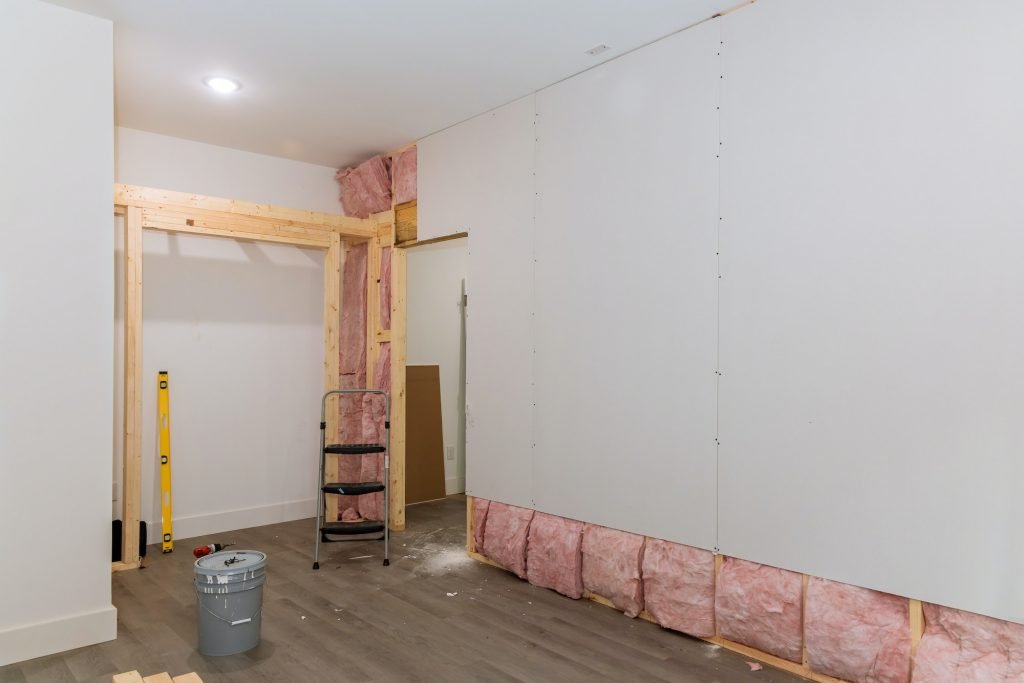How to Insulate Existing Walls: Introduction
Insulating your home is a crucial step towards energy efficiency and comfort. Many homeowners ponder how to insulate existing walls without undertaking a significant renovation. This comprehensive guide will cover various techniques, including protecting walls without removing the drywall, DIY injection foam insulation for existing walls, and understanding the cost of foam insulation in existing walls.
Understanding the Importance of Insulating Existing Walls
Insulating existing walls is essential for reducing energy bills, improving home comfort, and minimizing environmental impact. Proper insulation can also address issues like cold walls and make your living space more enjoyable year-round.
Read More: DIY Spray Foam Insulation for Existing Walls
Assessing Your Walls' Current Insulation
Before diving into insulation methods, it's essential to assess the current state of your walls. This involves checking for existing insulation and identifying areas where heat loss is significant.
Tools and Techniques for Assessment
Use infrared thermometers or thermal imaging to detect cold spots and areas lacking adequate insulation.
How to Insulate Walls Without Removing the Drywall
-
Drill and Fill Insulation
Drill-and-fill insulation is a popular method for adding insulation to existing walls without removing drywall. This process involves drilling small holes in the wall and blowing in insulation materials like cellulose, fiberglass, or foam.
-
DIY Injection Foam Insulation for Existing Walls
DIY injection foam insulation is another effective way to insulate walls from the inside. Foam insulation can be injected into wall cavities, offering excellent thermal resistance and air sealing.
Read More: Can You Put Drywall Over Spray Foam?
How to Insulate Existing Walls from Inside
For interior insulation, several options are available:
- Installing rigid foam boards directly onto wall surfaces.
- Adding insulated plasterboard over existing walls.
- Using reflective foil-backed insulation for an additional thermal barrier.
How to Insulate a Cold Wall from the Inside
Insulating a cold wall requires special attention to ensure the insulation material fills all gaps and provides a continuous thermal barrier. Injection foam and rigid foam boards are effective solutions for these issues.
How to Insulate a Room from the Inside
Insulating a room from the inside can be done by adding insulation layers to the existing walls, installing insulated drywall, or using decorative thermal panels that enhance the room's aesthetics.
Cost of Foam Insulation in Existing Walls
The cost of foam insulation in existing walls varies depending on the type of foam used, the size of the insulated area, and the installation's complexity. On average, homeowners can expect to spend between $1.50 to $3.50 per square foot.
Read More: How Much Does It Cost to Spray Foam a 2,000 Square Foot House?
Financial Considerations: How Much Does It Cost to Add Insulation to Existing Walls?
When considering how much it costs to add insulation to existing walls, factors such as the type of insulation, labor costs, and the size of your home play a significant role. It's essential to get multiple quotes and consider long-term energy savings.
How to Foam Insulate Existing Walls
Foaming existing walls involves injecting spray foam into wall cavities or applying rigid foam boards. Both methods provide excellent insulation but require different levels of expertise and equipment.
Benefits of Insulating Existing Walls
Insulating existing walls offers numerous benefits:
- Reduced energy bills due to better thermal efficiency.
- Increased comfort by eliminating cold spots and drafts.
- Improved soundproofing of your home.
DIY vs. Professional Insulation: What's Best for Your Home?
While some homeowners opt for DIY injection foam insulation for existing walls, professional installation guarantees a thorough and safe job, especially for more complex projects like drill and fill insulation.
Environmental Impact of Insulating Existing Walls
Insulating your home contributes to a reduction in energy consumption, thereby lowering your carbon footprint. Choosing eco-friendly insulation materials can further enhance this positive environmental impact.
Choosing the Right Insulation Material
Selecting the suitable insulation material is crucial for the success of your project. Options include:
- Fiberglass: Affordable and easy to install, suitable for drilling and filling insulation.
- Cellulose: An eco-friendly option, often used in blown-in insulation methods.
- Spray Foam: Offers excellent air sealing and thermal resistance, ideal for foam insulating existing walls.
Read More: Spray Foam Insulation vs Fiberglass Insulation
Step-by-Step Guide to Insulating Existing Walls
DIY Injection Foam Insulation for Existing Walls
- Preparation: Identify the areas for insulation and ensure the wall cavities are evident.
- Drilling Holes: Carefully drill holes at strategic points in the wall.
- Injecting Foam: Using a spray foam insulation kit, inject foam into the wall cavities.
- Sealing and Finishing: After the foam expands and cures, seal the holes and repaint if necessary.
Navigating Common Challenges in Wall Insulation
Insulating existing walls can present challenges, such as dealing with uneven cavities, avoiding damage to electrical wiring, and ensuring adequate ventilation. This section will provide tips on how to overcome these common hurdles.
Cost-Effective Insulation Solutions for Your Home
For homeowners on a budget, exploring cost-effective insulation solutions is essential. This could involve comparing the cost of foam insulation in existing walls with other materials or considering partial insulation upgrades.
How Much Does It Cost to Add Insulation to Existing Walls?
On average, adding insulation to existing walls can cost between $1,000 to $4,000, depending on the size of the area and the type of insulation used. DIY options can reduce costs but require careful consideration of your skills and job complexity.
The Role of Professional Insulation Services
While DIY options are available, professional insulation services offer expertise and efficiency, especially for complex projects like drill and fill insulation. They can also provide valuable advice on effectively insulating a room from the inside.
Choosing the Right Insulation Contractor
Select a contractor with experience insulating existing walls, good customer reviews, and reasonable pricing. Ensure they are licensed and insured.
Maximizing Energy Efficiency with Proper Insulation
Proper insulation goes beyond just filling in the walls. It involves creating a complete thermal envelope around your home. This includes insulating attics, basements, and crawl spaces to maximize energy efficiency.
Insulation Maintenance and Upkeep
After installing insulation, it's essential to maintain it to ensure its longevity and effectiveness. Regular inspections for moisture, pests, and any deterioration are crucial.
Future-Proofing Your Home with Advanced Insulation Techniques
As technology advances, so do insulation techniques. Staying informed about new materials and methods can help you make your home more energy-efficient and comfortable in the long run.
Innovations in Insulation
Explore the latest innovations in insulation, such as intelligent, breathable materials and eco-friendly options, to keep your home at the forefront of energy efficiency.
Understanding the Impact of Insulation on Indoor Air Quality
While insulating your walls improves energy efficiency, it's also essential to consider its impact on indoor air quality. Some insulation materials can off-gas volatile organic compounds (VOCs), while others can improve air tightness, reducing the ingress of outdoor pollutants.
Tips for Maintaining Healthy Indoor Air
- Choose low-VOC or natural insulation materials.
- Ensure proper ventilation during and after installation.
- Regularly inspect insulation for signs of mold or dampness.
Balancing Insulation with Home Aesthetics
Insulating existing walls doesn't mean compromising on your home's aesthetics. Modern insulation techniques and materials can seamlessly integrate into your home's design.
Creative Ways to Incorporate Insulation
- Use decorative panels over rigid foam boards.
- Incorporate insulated drywall with stylish finishes.
- Explore hidden insulation options like injection foam insulation.
The Importance of Thermal Bridging in Insulation
Thermal bridging occurs when heat bypasses the insulation through more conductive materials like metal or wood framing. Addressing thermal bridging is crucial for the overall effectiveness of your insulation.
Solutions to Minimize Thermal Bridging
- Use continuous layers of insulation.
- Incorporate materials that break the thermal bridge in critical areas.
- Consult with insulation professionals to identify and address potential thermal bridges.
Seasonal Considerations in Insulating Existing Walls
The effectiveness of insulation can vary with seasons. Considering how different insulation materials perform under various temperature and humidity conditions is essential.
Preparing for Seasonal Changes
- Ensure adequate insulation for both warm and cold months.
- Consider additional insulation in areas prone to extreme temperature variations.
- Regularly check and maintain insulation to ensure its efficacy year-round.
Long-Term Benefits of Wall Insulation
Investing in wall insulation offers long-term benefits beyond just immediate energy savings. These include increased property value, reduced carbon footprint, and enhanced comfort.
Evaluating the Return on Investment
- Calculate energy savings against the initial cost of insulation.
- Consider the added value to your property.
- Factor in the environmental benefits and potential tax incentives.
Common Mistakes to Avoid in Wall Insulation
DIY insulation projects can be challenging, and inevitable mistakes can reduce the effectiveness of your insulation. Understanding these common pitfalls can help ensure a successful installation.
Avoiding Insulation Errors
- Don't overlook air sealing – it's as important as the insulation.
- Avoid gaps in insulation, which can lead to cold spots.
- Ensure that the insulation material is suitable for your specific wall type.
Conclusion
Insulating existing walls is critical in enhancing your home's energy efficiency, comfort, and value. Whether you opt for professional services or tackle it as a DIY project, understanding the various methods, materials, and considerations is critical to a successful insulation upgrade. Remember, the right insulation solution saves energy and transforms your living space into a more comfortable and sustainable environment.
FAQs on Insulating Existing Walls
How Do You Insulate Already Finished Walls?
Insulating already finished walls can be done using several methods:
- Injection Foam Insulation: Small holes are drilled into the wall, and liquid foam insulation is injected. Once it hardens, it fills the cavity and provides insulation.
- Blow-In Insulation involves drilling holes into the walls and blowing in loose-fill insulation like cellulose or fiberglass.
- Internal Wall Insulation: Adding insulated drywall or rigid foam panels to the interior of the walls.
Each method requires minimal disruption to existing wall finishes.
Is It Worth Insulating Existing Walls?
Absolutely. Insulating existing walls is worth the investment for several reasons:
- Energy Efficiency: It significantly reduces heat loss in winter and heat gain in summer, leading to lower energy bills.
- Comfort: Proper insulation eliminates cold spots and drafts, making the living space more comfortable.
- Environmental Impact: Reduced energy usage lowers your carbon footprint, contributing to environmental conservation.
While the initial cost may seem substantial, long-term savings and comfort improvements make it worthwhile.
Can You Insulate Old Walls?
Yes, old walls can be insulated. Older homes often lack adequate insulation, and updating them can dramatically improve energy efficiency and comfort. Techniques like injection foam or blow-in insulation are particularly effective for older walls as they require minimal structural alterations.
What Is the Cheapest Way to Insulate Internal Walls?
The cheapest way to insulate internal walls generally involves materials like fiberglass or cellulose, which are less expensive than foam insulation. Methods such as:
- DIY Blow-In Insulation: Using rented equipment to blow fiberglass or cellulose into wall cavities.
- Adding Rigid Foam Boards: Directly attaching foam boards to internal walls is cost-effective and can be a DIY project.




